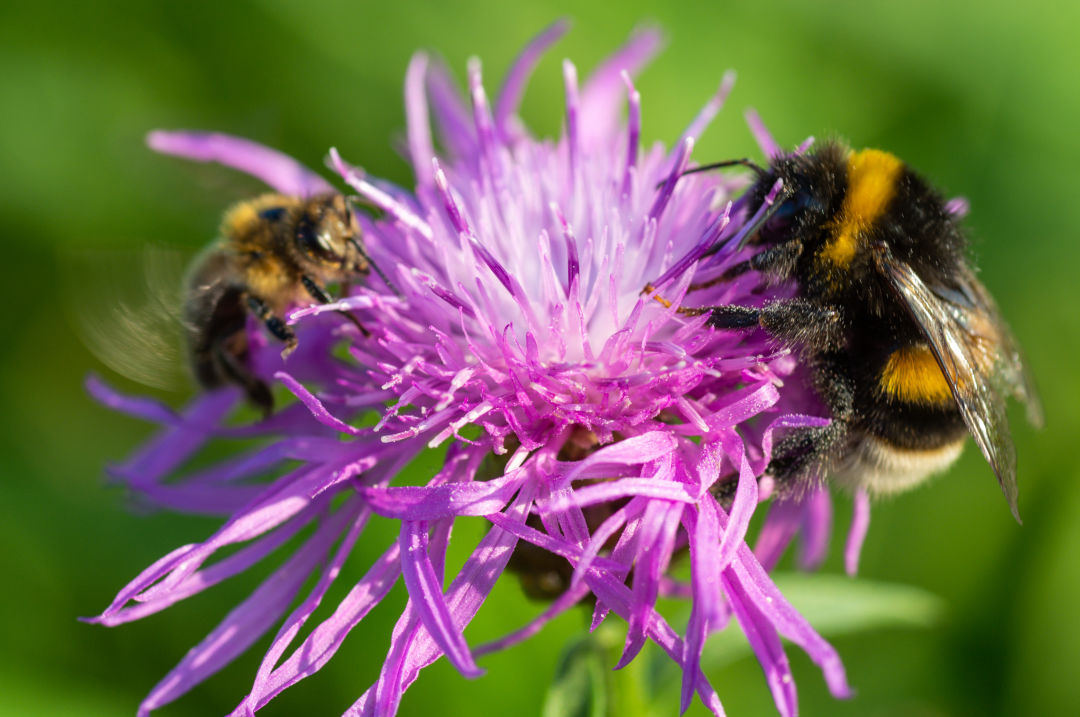How to Help Bees In Your Own Backyard

Pollinate! Pollinate, I say.
Image: NOVGORODEC/Shutterstock.com
This Saturday, August 17, happens to be National Honey Bee Day, a day to celebrate our beloved buzzing pollinators, and to also shed light on the important role all bees play in our daily lives.
There are more than 19,000 different species of bees globally. They pollinate 30 percent of the world’s food crops and 90 percent of our wild plants. They're absolutely vital to sustaining life on this earth as we know it, but as you've probably heard, our bees are dying off in droves.
For the last 15 years, bee populations have declined at an alarming rate due to habitat loss, pesticide use, and climate change. This impacts food security worldwide because fewer bees means fewer crops, and crop shortages spell disaster for the economy and ecosystem. More than a third of all bee species are facing declines in population and almost 10 percent are facing complete extinction.
It's scary, but there are some things you can do at home to help. In light of National Bee Day, enowned second- and third-generation beekeepers, Stuart and Cedar Anderson, who invented the super adorable Flow Hive—a beehive that allows for easier honey extraction and has reached over 65,000 beekeepers in 130 countries since its debut in 2015—share their top backyard tips for helping bees.
These are five easy things we can all do to help bees.
Put the sprays away.
Pesticides are recognized as one of the leading threats to pollinators worldwide. Replace garden pesticide sprays with garlic, onion or salt spray, soap and orange citrus oil, or even chili or pepper spray. Since natural sprays can also harm pollinators, only use them outside of foraging hours (i.e. night time) and practice better pesticide management to protect pollinators.
Plant bee-friendly flowers.
Find plants that bloom at different times of the year to support different bees during different seasons. Trees and shrubs produce much higher quantities of pollen and nectar, but smaller plants produce forage more regularly. Find both on Texas A&M's list of bee-friendly plants.
Let your garden get a little messy.
When you let your vegetables and herb plants flower or let dandelions bloom, bees get to forage.
Help educate children on the importance of pollinators.
It's an excellent excuse to get them outdoors and caring about our environment. Plant a vegetable garden, or if you have one already, teach them about the importance of pollinators. You can even take the family to beekeeping classes, hosted by the pros at Central Texas Beekeepers Association.
Become a beekeeper.
That suit looks good on you, and there are lots of likeminded folks to meet at the Houston Beekeepers Association. Or you could just adopt a beehive with the Bee Friendly Foundation, and they'll take care of it for you.




